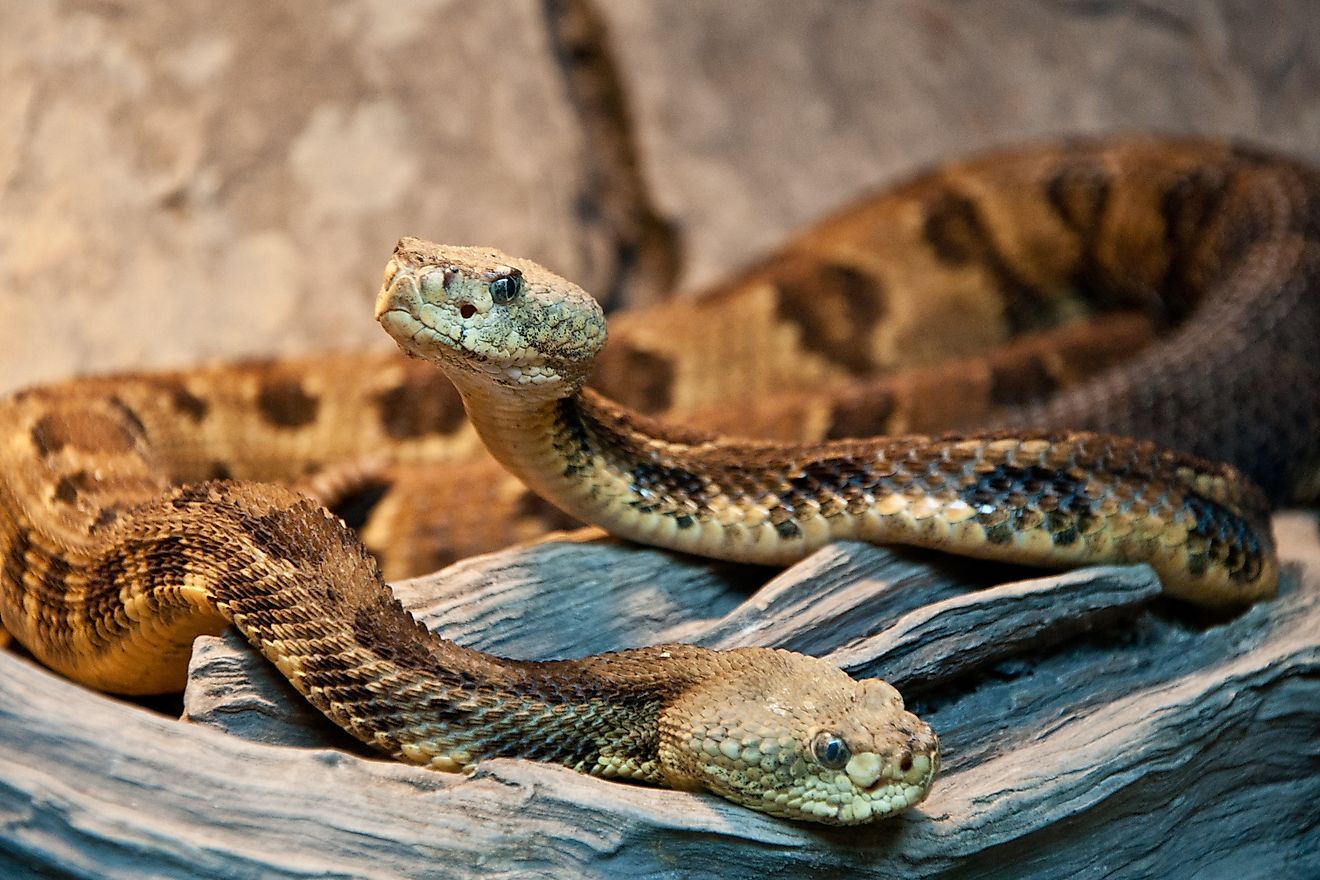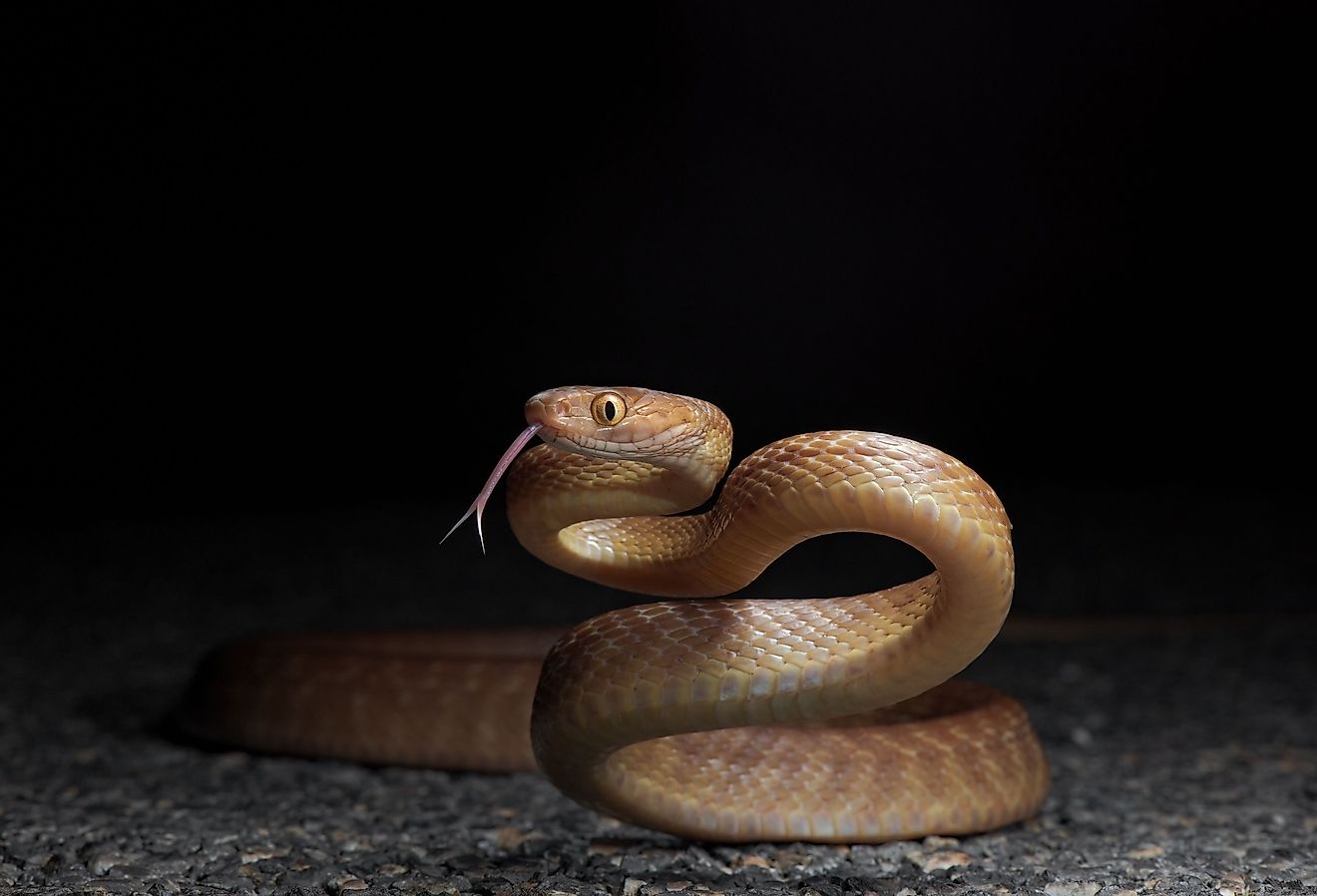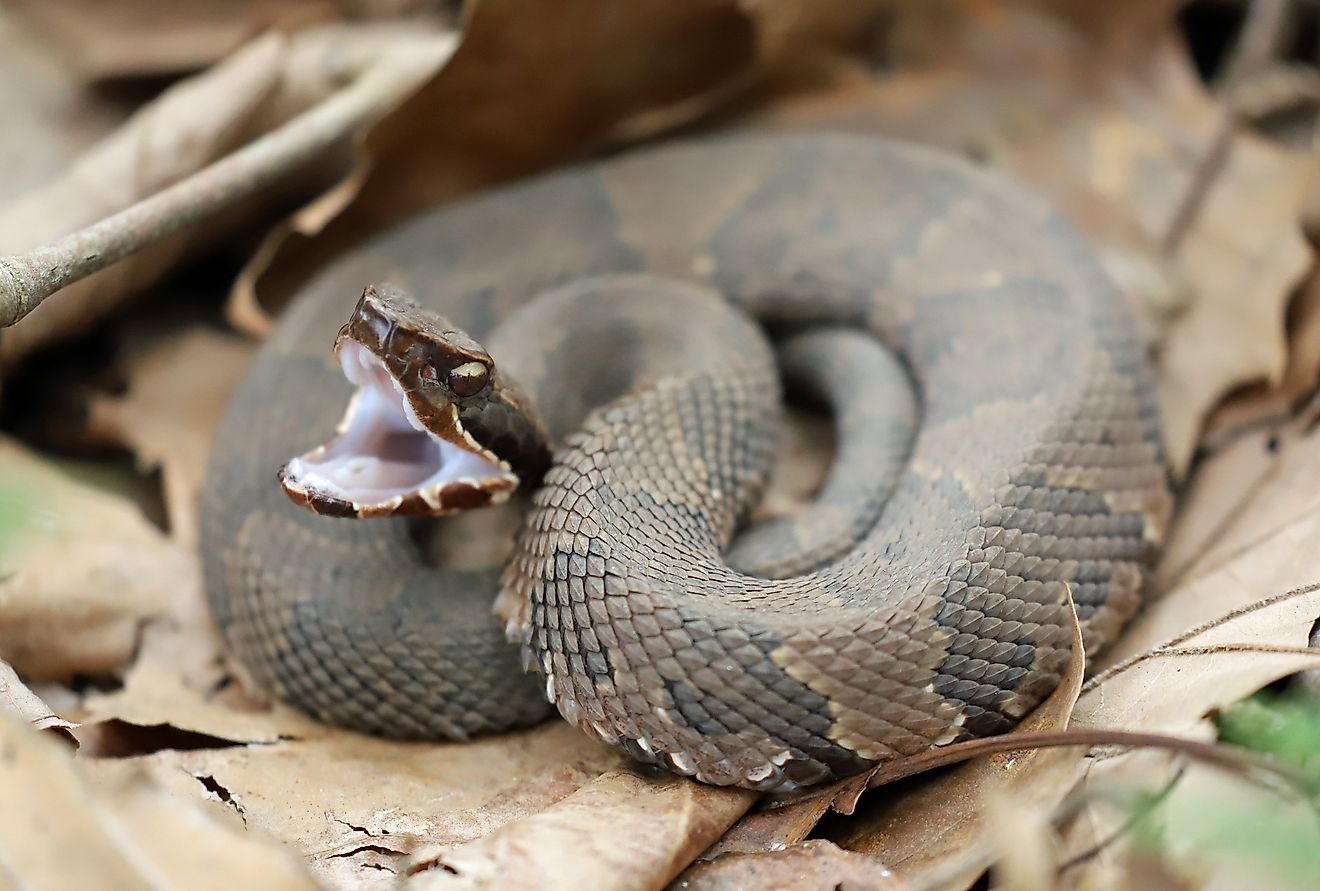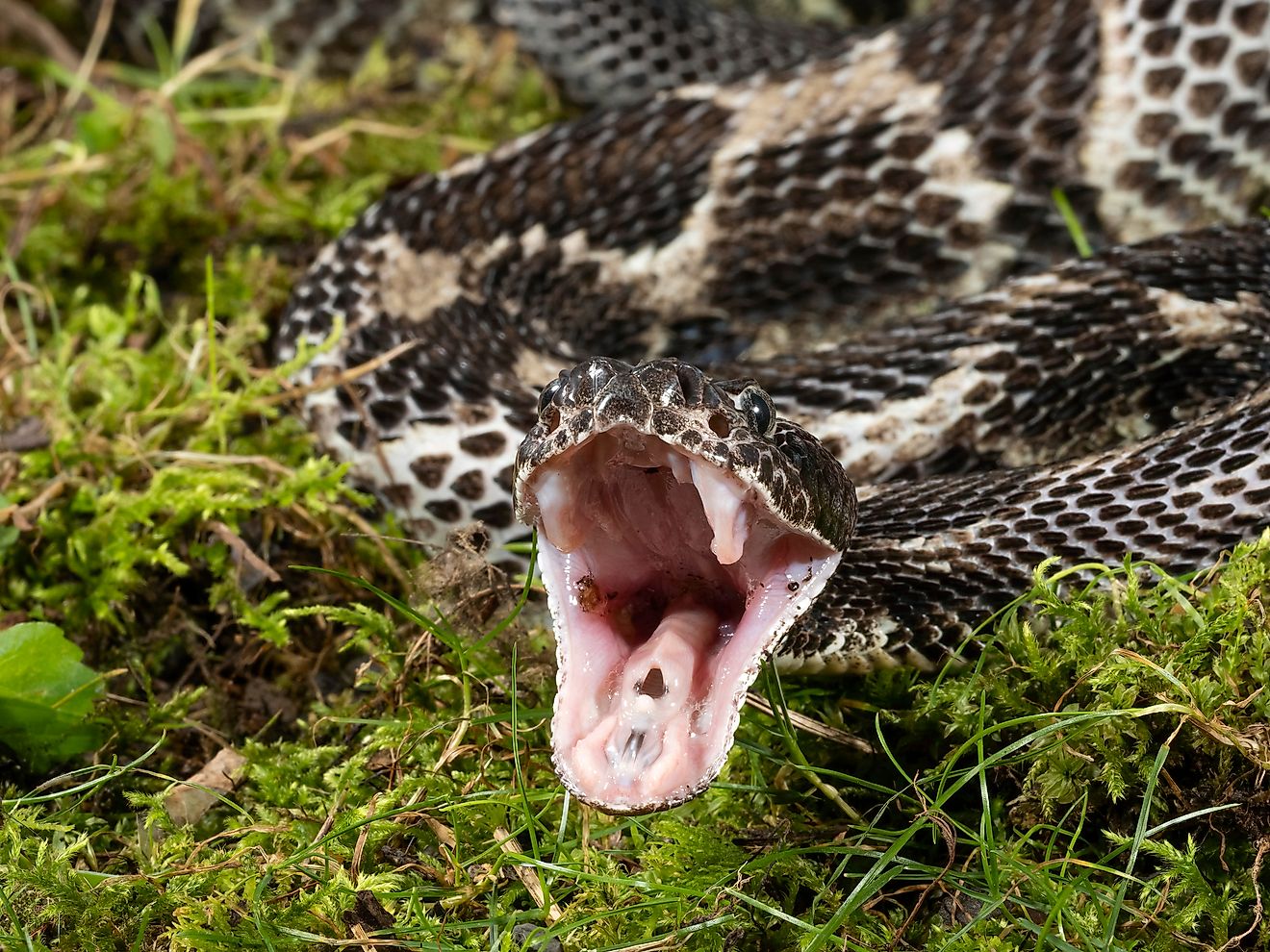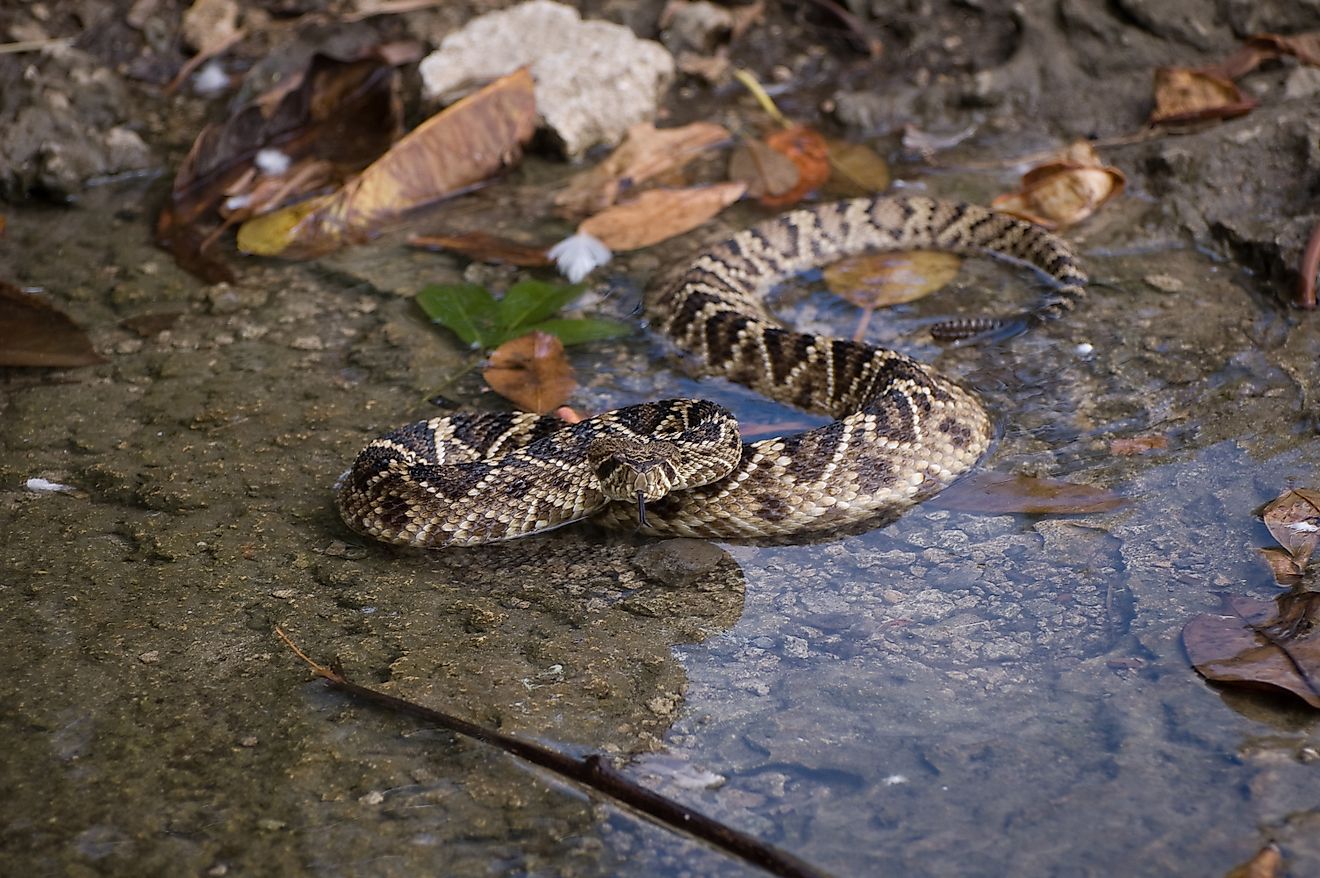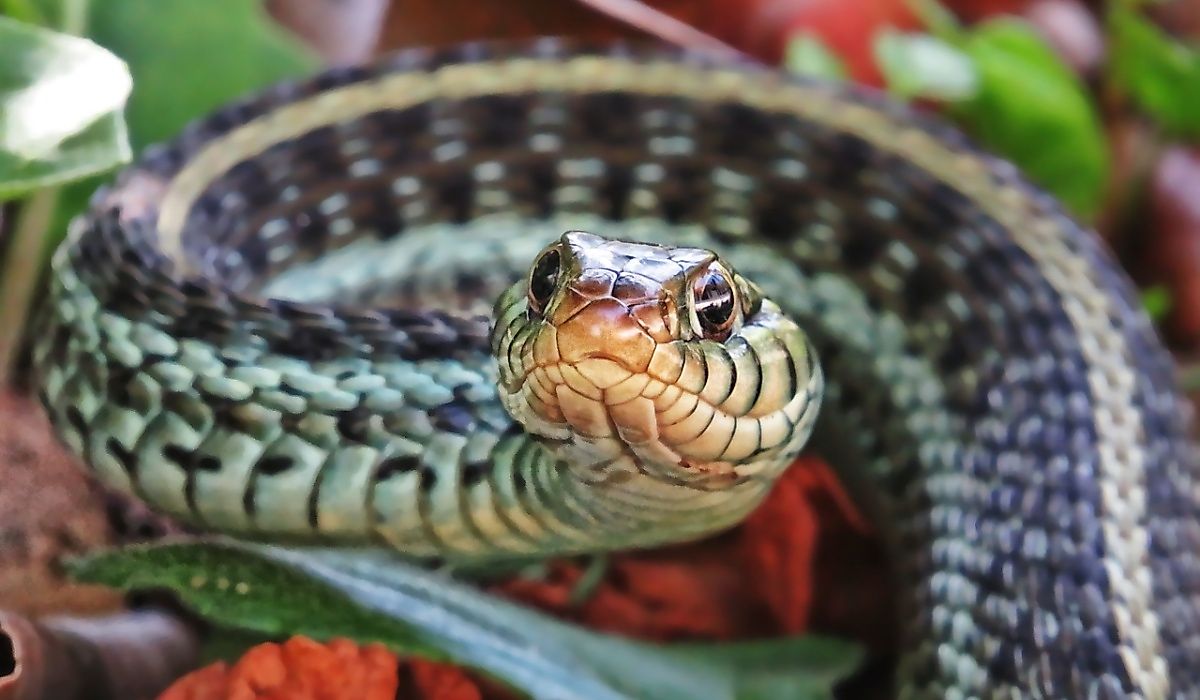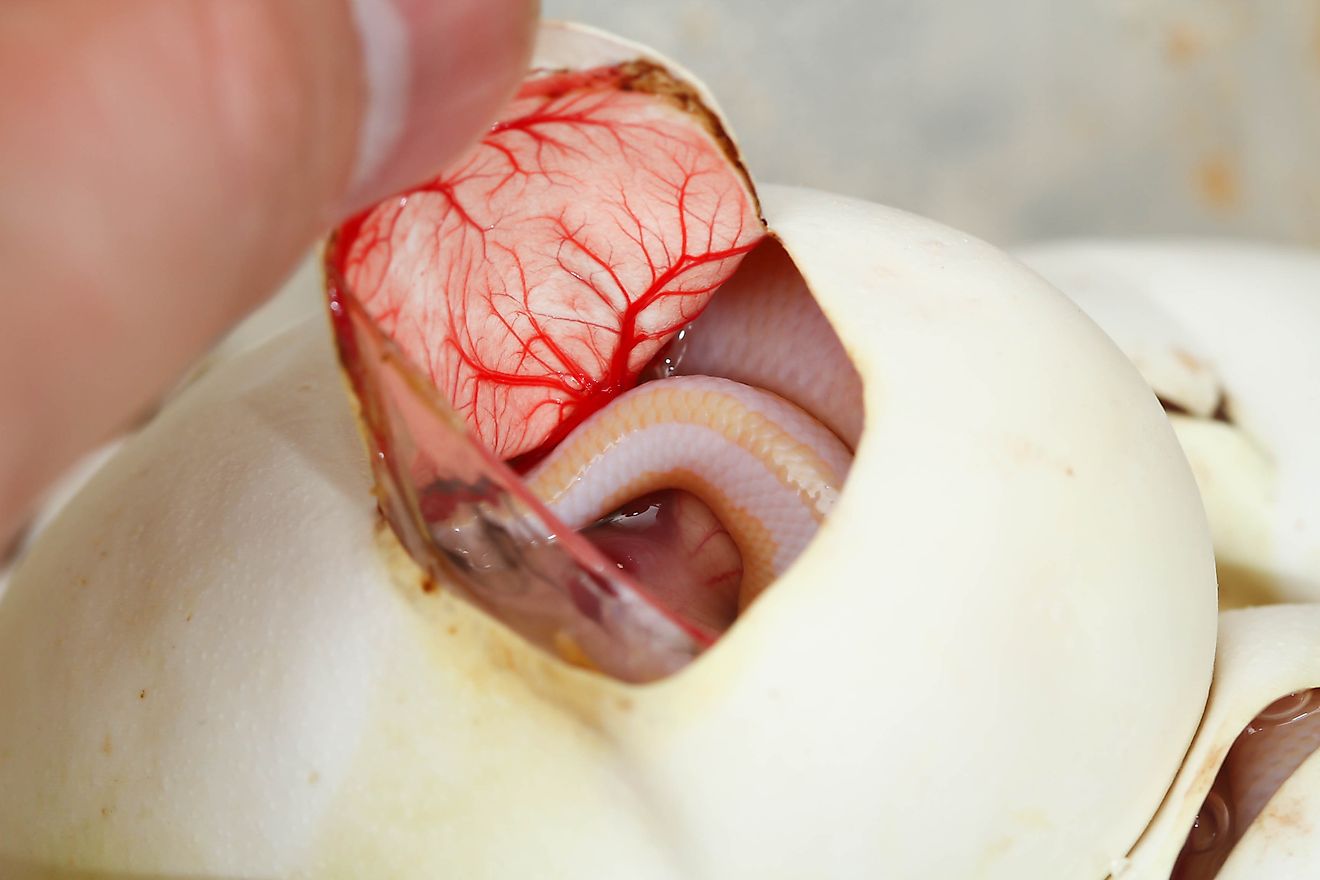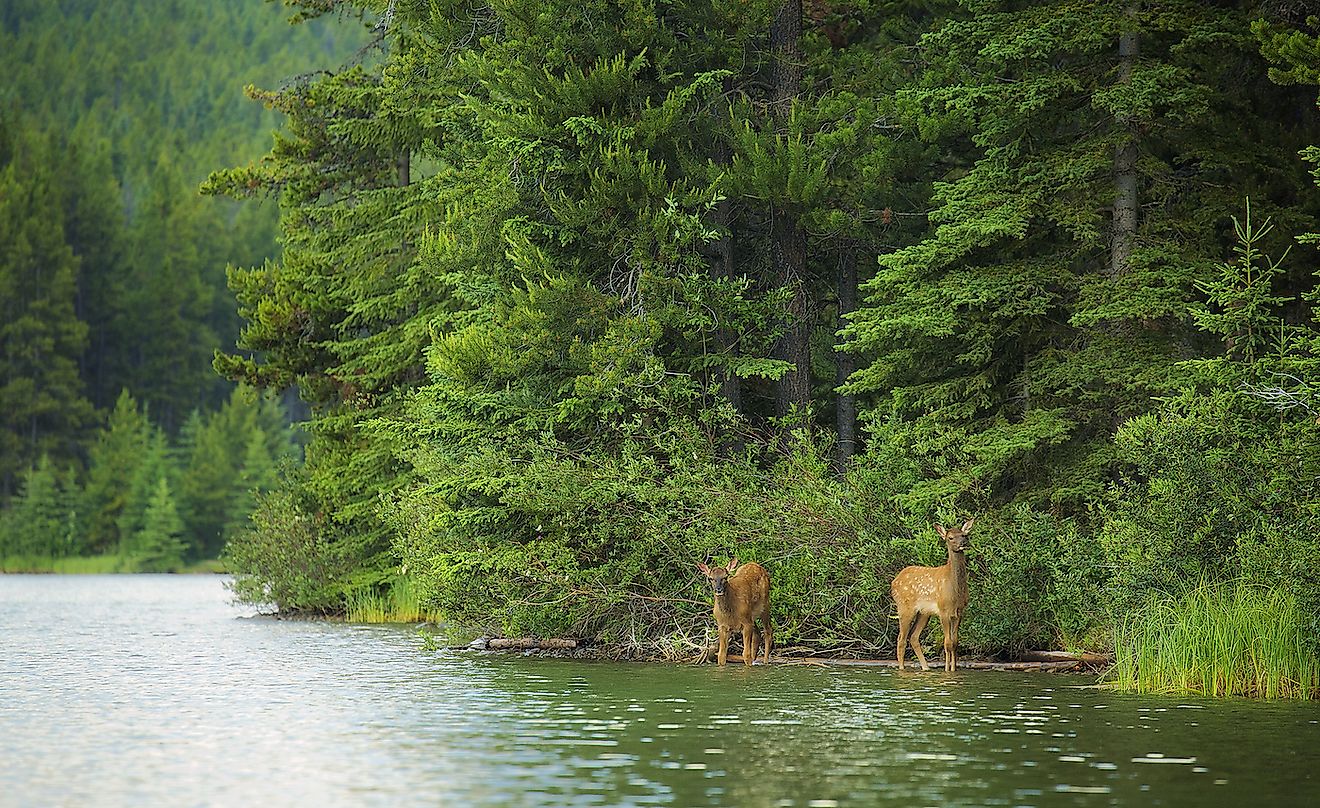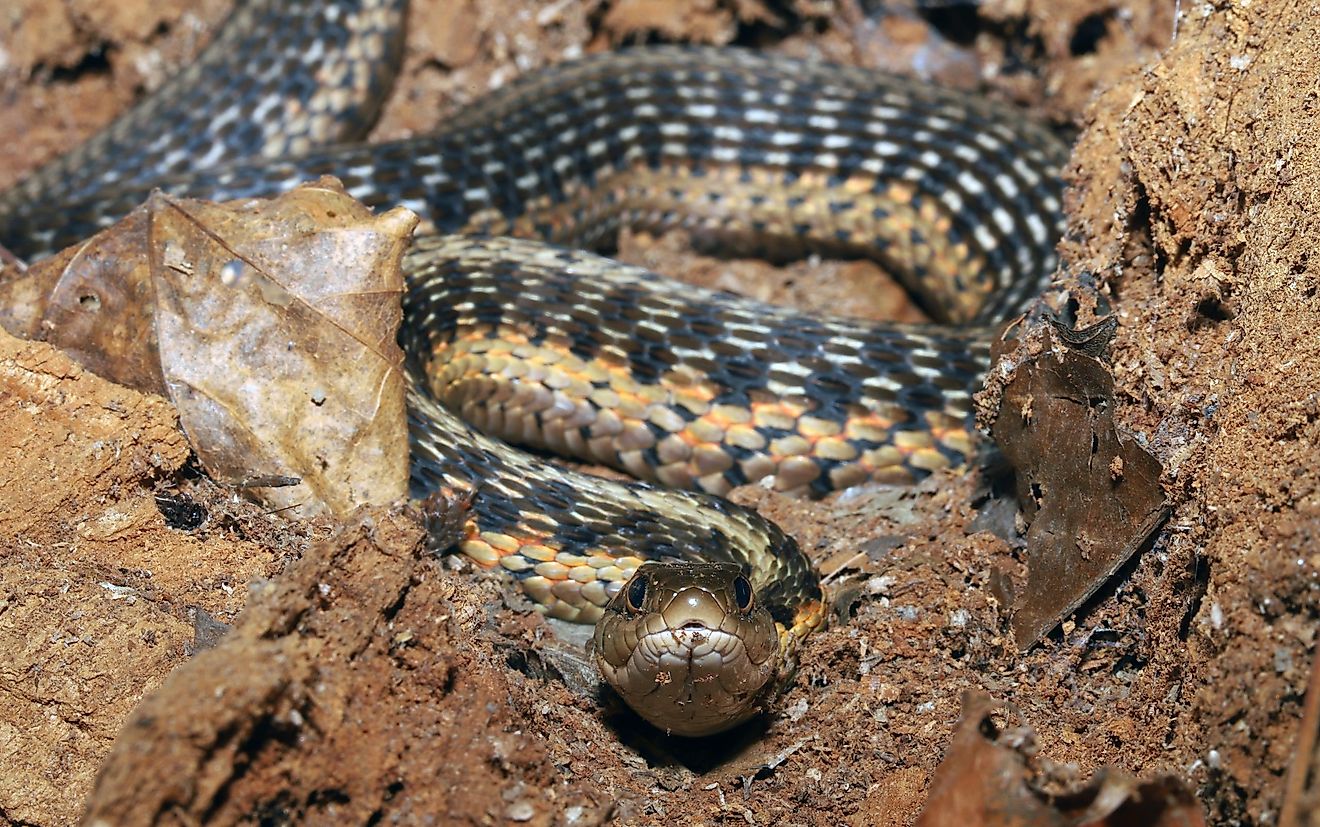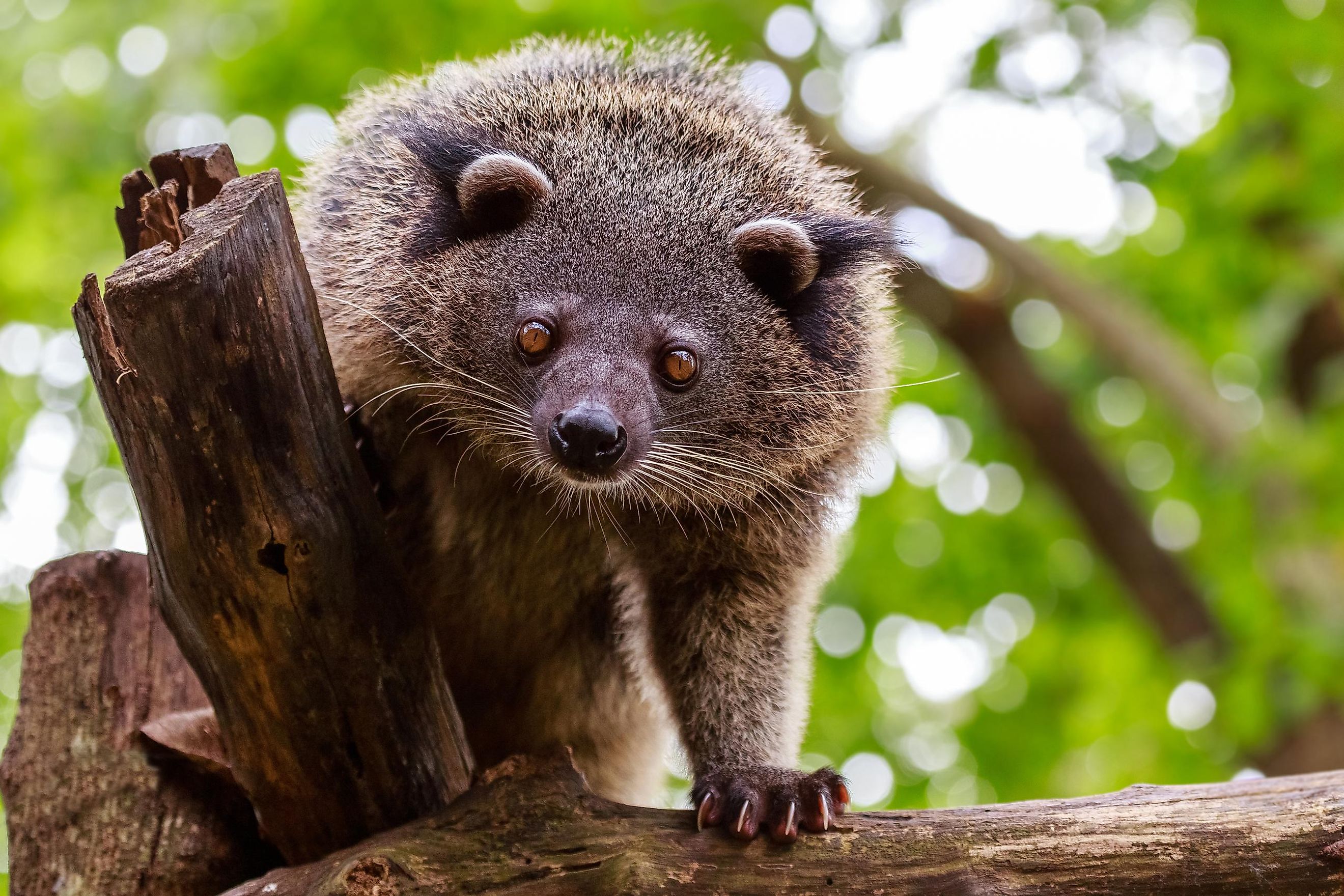
Bearcat
A bearcat, also called "Asian Bearcat" or "Binturong," is neither a bear nor a cat as its misleading name suggests, but it looks more like a raccoon. They are unique mammals, the largest in the Viverridae family and although they exhibit some cat-like characteristics, bearcats do not possess any link to modern-day cat species. They are excellent climbers, hard to spot in the wild, and are often caught on cameras sneaking along the ground, moving from one tree to another. Bearcats are fascinating mammals in the wild with unique characteristics like a prehensile tail, ear tufts, semi-retractable claws, cat whiskers, and a buttered popcorn scent. Despite their rich cultural association and popularity among traditional communities, their numbers in the wild are declining. More studies are needed to determine their exact numbers and behavior patterns in the wild.
Range And Habitat
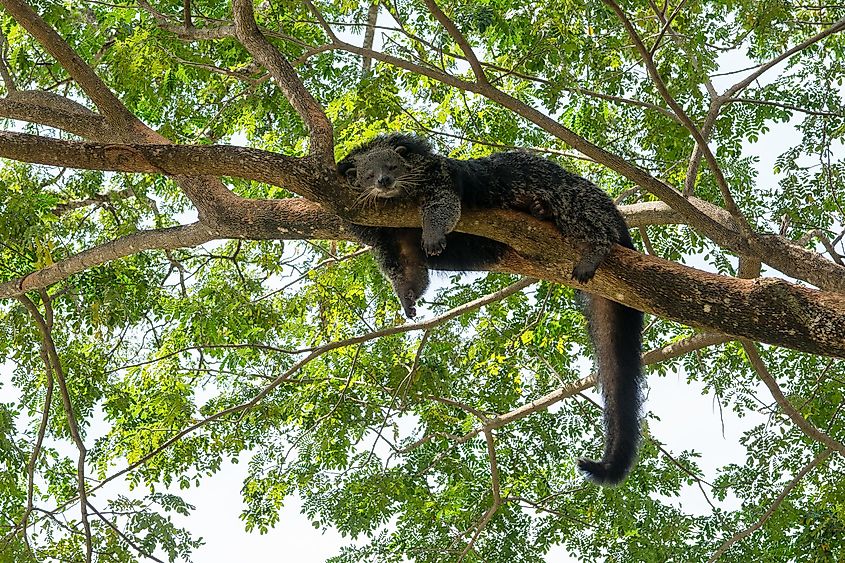
The bearcat is native to the tropical regions of South and Southeast Asia and other woodlands. Their typical habitats include the tropical forests of India (Northeast India), Myanmar, Bangladesh, Malaysia (Malay Peninsula), Borneo, Indonesia, Philippines, and Cambodia. Although less common, they are also found in Nepal, South China, Java (Indonesia), Vietnam, Laos, and Thailand.
The bearcat is a tree-dwelling species confined to tall forests that spend most of its time searching for food among the high tree canopies. They are more common in areas with good tree cover as compared to the forested plains. Bearcats are most comfortable in the dense tropical and subtropical forests, rarely strolling across the forest floors during the day. It is amusing to see them hang upside-down from tea tops and crawl like sloths down the trees, coming down the trees head-first like squirrels. While in the wild, bearcats have a lifespan of about sixteen to eighteen years, and when cared for by humans, they can survive up to the age of 25 years.
Physical Description, Species, And Common Names
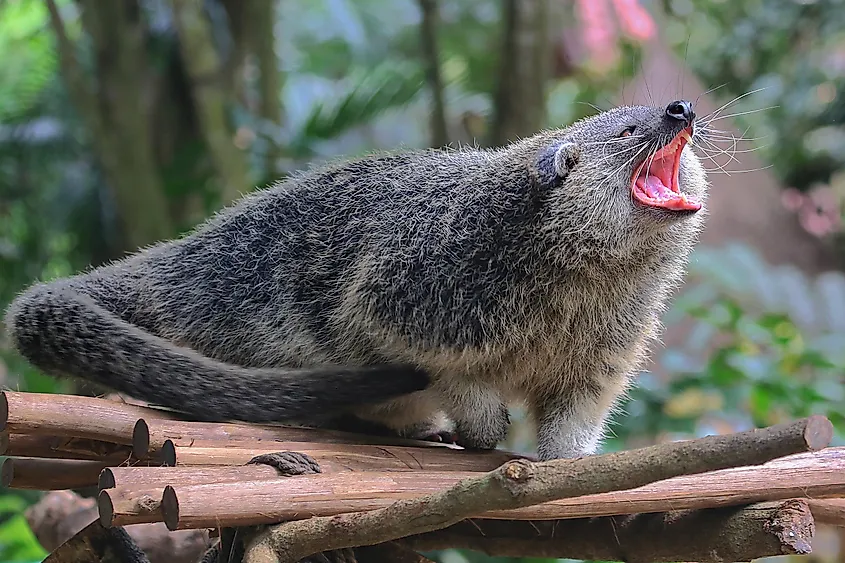
A bearcat can weigh up to fifty pounds but more often weighs between 25 and 35 pounds and resembles a raccoon with a wide, low, and muscular body. Its body length can reach up to 38 inches, and its tail can measure up to 35 inches. The bearcat's fur is rough, scruffy black, with occasional gray tips that may appear over time. Their dark brown, shaggy fur coat darkens into a blacker shade on their tails, limbs, and snouts. The tip of their tails has a leathery patch that allows them extra traction while climbing. A bearcat has long white whiskers, like a cat's, and small rounded ears from which prominent long ear hair tufts protrude. Its thick, muscular prehensile tail, similar to a monkey's tail, allows it to grasp or hold objects and even act as a fifth limb to climb a treetop. While on the ground, they walk flat on their feet, strolling from side to side like little bears. They can also be found standing on their hind legs like kangaroos, balancing on their tails.
The bearcat's scientific name is Arctictis binturong (genus: Arctictis, species: binturong), the only member of the genus Arctictis that belongs to the Viverridae family which resembles small to medium-sized cat-like mammals including fossas, civets, linsangs, and genets. The meaning of "Arctictis" in Greek is "bear weasel." The name binturong is common in Borneo, its other names and spellings that vary from region to region include "ma-turun," "ben-turong," and "ten-turun." In some other communities, the bearcat is also known as Malay Civet Cat and Asian Bearcat, with some even calling it Red Panda.
Food Habits
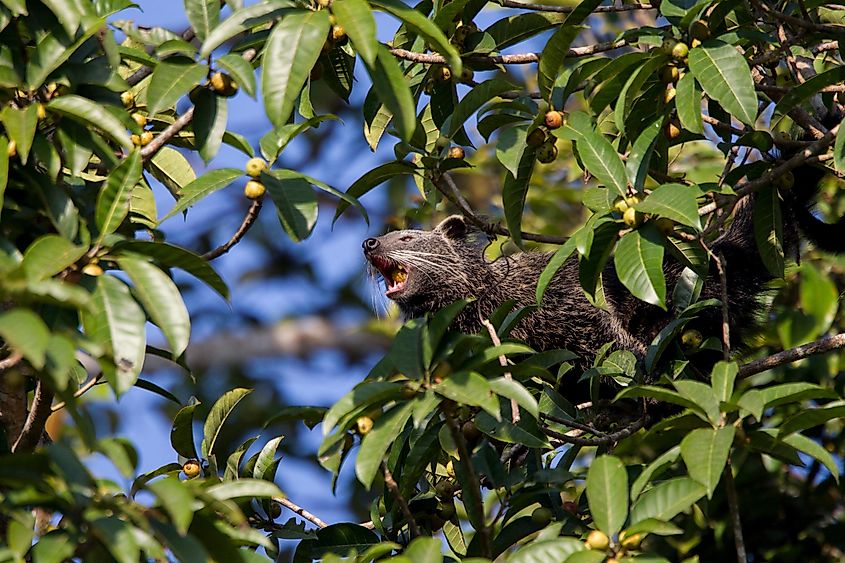
Bearcats look like and are classified as carnivores due to their sharp teeth and claws, but they are omnivores that eat invertebrates, fish, rodents, worms, insects, fruits, eggs, carrion (decaying flesh of dead animals), plant shoots, and leaves, they can eat anything they find for food. Since they do not live near water sources, foods like fish and earthworms are unimportant foods for them. While in the wild, they have a symbiotic association with the strangler fig fruit (tropical forest seeds), one of their favorites. The fig seeds, in turn, evolve to germinate better after the fruit has passed through the digestive tract of a bearcat. Those that live in captivity will also eat ground meat, meat mixtures, and dog food and can be fed fruits such as bananas, oranges, apples, canned peaches, and mineral supplements.
Behavior And Reproduction
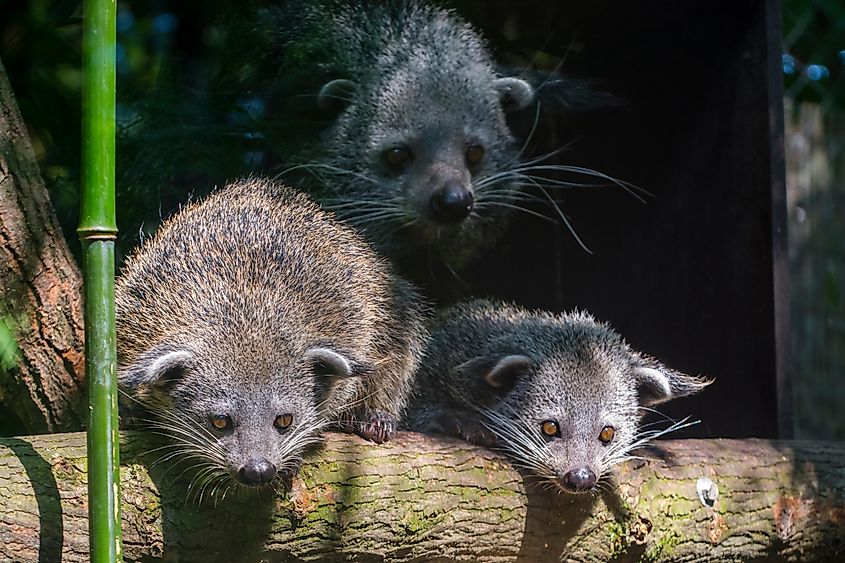
Bearcats are nocturnal, meaning they are active at night and rest during the day, usually found curling their strong tail around the branches of a tree while falling asleep hidden somewhere on the treetops. Being noisy creatures, they can snort, chuckle and purr like cats when they are happy and pleased. They use their characteristic scent to communicate their presence to other members and discourage predators. Their unique popcorn scent is due to a chemical called "2-acetyl-1-pyrroline" in their urine. Fear, aggression, and displeasure are signaled via cat-like screams, low grunts, howls, and hisses. Females attract males during their estrus cycle. When the females are about thirty months old, they reach sexual maturity and are fertile until fifteen years of age. The males reach sexual maturity at about 28 months.
The females exhibit "embryonic diapause," also called delayed implantation, meaning they breed only when a potential mate is available. The fertilized egg will not attach to the female's uterine wall until days (or months) later when they become pregnant during favorable conditions. The females potentially breed twice a year and signal males by purring to indicate their receptiveness to mating. Upon a successful pregnancy, their gestation period lasts for about 90-92 days. Bearcats, on average, can give birth to two offspring at a time, but the number can vary from one to six. Their young ones are called cubs or "Binlets." The young ones are born with eyes closed and cling onto the mother's fur for the first few days of their lives. They are with the mother until they become independent, sometimes even longer.
Importance
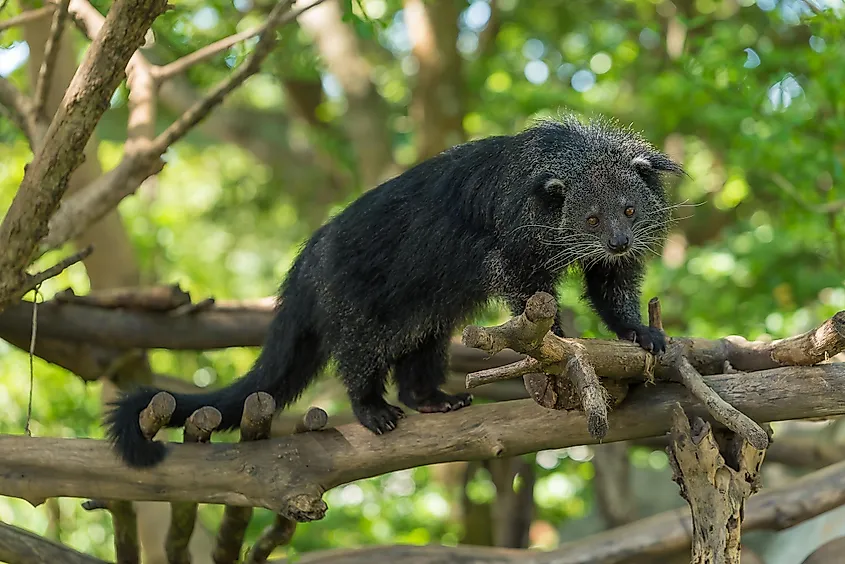
The bearcat has a vital role to play in maintaining the ecological importance, balance, and functioning of the Southeast Asian rainforest ecosystem. They are great as seed dispersers owing to the unique digestive system that enables them to digest a variety of fruits, including those with tough outer coverings. They excrete the intact seeds from the fruit, helping to disperse them throughout the forest. This function is an effective way to maintain the diversity and resilience of rainforest ecosystems. Bearcats help maintain a balance within the food web through their diet, which includes a diverse variety of fruits and smaller animals, thus helping to regulate the populations of species within their ecosystems. They protect valuable resources and help prevent overgrazing by exerting predation pressure on certain species, contributing to maintaining the ecosystem's overall health. Known for their cultural significance due to traditions and local folklore within many indigenous communities, they are often regarded as sacred animals. Hence, they are crucial to maintaining the traditional knowledge and cultural heritage of individual communities.
Threats
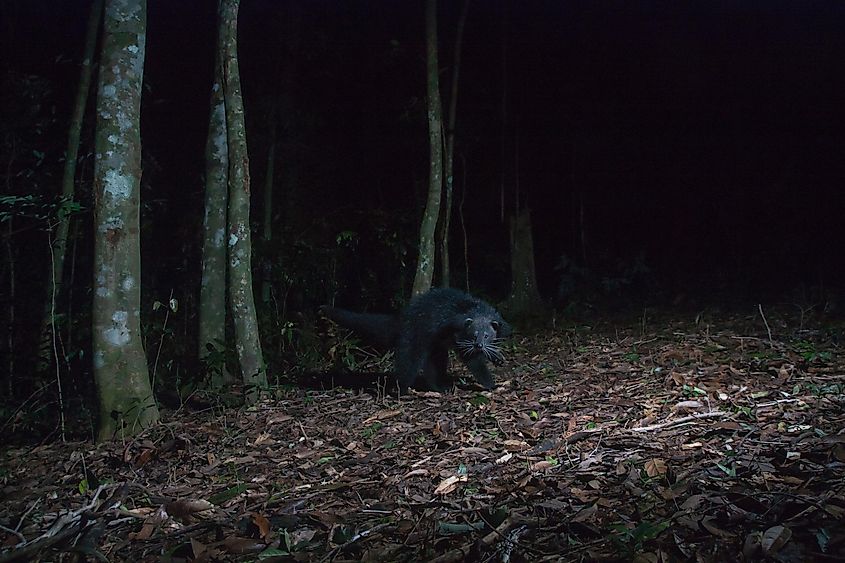
The bearcat is not a common species in much of its range and is endangered in some parts while being assessed as vulnerable in other parts. The IUCN Red List lists the species as vulnerable because of its declining population trend, estimated at more than 30% since the mid-1980s. Habitat loss and disturbance are the greatest threats to its populations. Humans constantly pursue forests for agriculture and human settlements resulting in habitat fragmentation. Destructive human practices such as deforestation are a big problem also because such practices destroy both their habitat and food source. Poaching or illegal hunting, and killing of the bearcat for meat, fur, and body parts, the demands for traditional Asian medicine as well as for wildlife trade, and the craze for domesticating exotic species is yet another significant threat that only increases the vulnerability of the species towards being critically endangered.
It is essential to realize the impact of the threats humans impose on the species and hence raise awareness about the loss of this precious species. Important conservation measures include tightening law enforcement, raising awareness about wildlife conservation, habitat loss, illegal hunting, promoting sustainable practices, and implementing regulations against wildlife trade. Conserving the species needs the collaborative cooperation of the governments, local communities, conservation organizations, and the public so that together they can all contribute to preserving the rich biodiversity of the Southeast Asian rainforests.
The bearcat is a fascinating mammal, unique and rare, with important functions within its habitat. It has a significant ecological impact on its ecosystems, playing a role in preserving Southeast Asia's rainforests and many other species whose sustenance depends on these habitats. Since the bearcat is assessed as a vulnerable species, it is essential to conserve them. It is crucial to value these unique species and adopt strategies to learn more about them so that we can all contribute towards protecting these vulnerable species.
